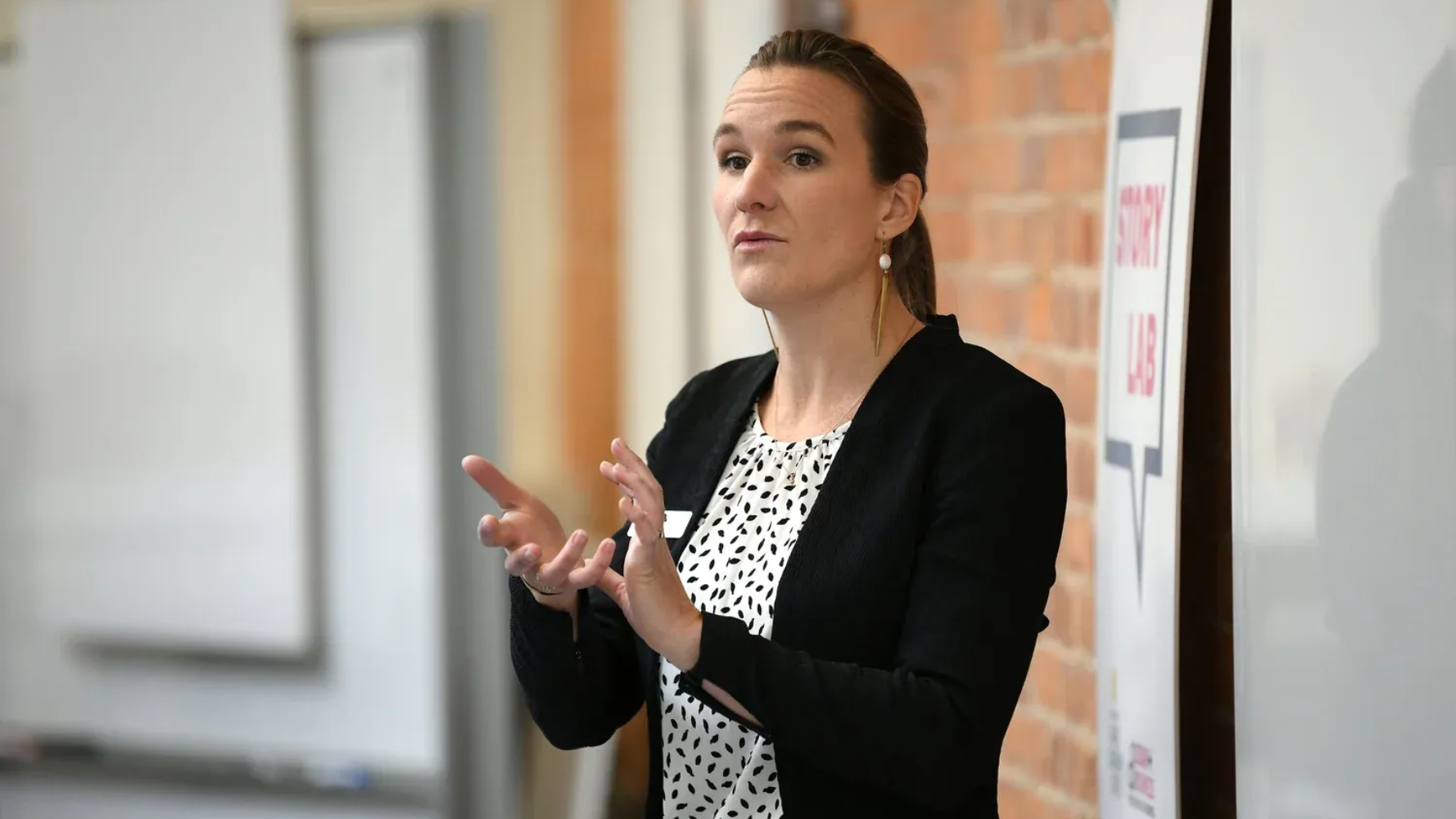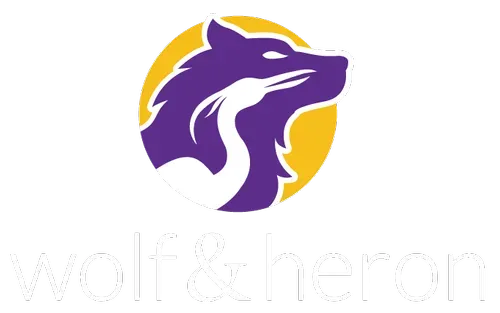5 Common Questions About Telling Influential Stories

In the 5+ years that we’ve been operating as Wolf & Heron, we’ve had the privilege of delivering our Influential Storytelling program to 1000s of folks and provided one-on-one story coaching to hundreds of professionals. In our experience, there are several questions that have been posed to us with regularity about storytelling and influence, so we thought we’d take some time to share our perspective publicly.
How do I know what story to choose? I don’t feel like I have a story to tell that is interesting.
Yes, you do. You’d be surprised what others feel is valuable or interesting about a story that you may not see in your own experience. One of our favorite stories that came out of the program was about a woman’s experience adopting a cat and how the cat taught her something about love and commitment. If you’re looking to develop a personal story, consider the moments that are meaningful to you, stories you already tell to others, or any moment of change in your life. If you’re looking for a professional story, consider the moments where you made a mistake, learned a lesson, or were surprised. There are stories everywhere in your life. All you have to do is start looking around.
What comes first, my story idea or the theme/point I’m trying to communicate?
Either can come first. What matters is finding the approach that works for you. Over time, you can build a story library that you can come back to when you need to find a story to tell. But as you’re first getting started, follow whatever path offers the least resistance, and make some progress! In some cases, when we work with participants in the Influential Storytelling program, they have an immediate and obvious idea for a story that pops into their mind, but they’re not really sure what the theme of it is. That’s okay! They start with the story idea, share it during the workshop and refine the theme with their practice partners. Others come to our program with a specific work situation or context for which they want to develop a story. For example, salespeople may think about objections they often have to handle in a sales conversation. In that case, they know the point they want to make, but don’t have a story idea in mind yet. That’s ok too! You can always back into a story idea that makes the point you want to make.
My story is complex. Can it have multiple themes?
Yes. And no. It is likely that your stories will all have several potential themes. Ultimately, stories are about human behavior and experience which is infinitely complicated. One of Kara’s go-to stories is about leaving her laptop behind on an important business trip and the related fallout. She’s told versions of this story to a variety of audiences, tweaking it slightly to adjust it to a plethora of themes including:
- Stories have the power to influence people.
- Leadership is not determined by your title; it is demonstrated in your willingness to do anything for the team.
- True leadership is having the courage to ask for help.
The crux, here, however, is that even though the story can adapt to several different themes, Kara is always intentional about which ONE of those themes she’s going to drive in a specific telling of her story. She’ll include and exclude details in the story that help to bring out the point she wants to make. But every time she tells her story, it has just one theme for her audience to absorb. This is wonderful because it makes her story flexible for multiple audiences and situations.
How many stories should be in my 30 minute presentation?
The annoying answer is that it depends. If there is a main “so what?” for your presentation, then you should have at a minimum a story that communicates that point. Often presentations have several distinct sub-points that are important for the audience to retain as well. If that’s true, an effective and sticky way to land each of your points is to wrap them each in a story. That might mean you need to find time for 4-5 mini-stories throughout your presentation. Additionally, stories are great as an opening and/or ending to your presentation.
Consider how you can include stories of varying length and depth. Stories don’t need to be 4-5 minutes long. In 30 seconds you can tell a compelling influential story that will weave nicely into the arc of your presentation among the other information you’re trying to convey.
My company/team is data-oriented. How do I build in storytelling when all that matters is the data?
Yes! Companies and organizations care about data. We hope to make rational decisions based on data. We need data to defend and support our points of view. But data does not exist agnostic of a story. In fact, any data analyst will tell you that data is just the starting point. You have to look at the data and make sense of it… and that sense making is fundamentally about finding the story within the data. Brene Brown once stated she was originally hesitant about being called a storyteller; she was, after all, a serious research scientist. But upon further reflection, she pointed out that “stories are data with a soul.” That sentence tells you everything you need to know about Brown’s stunning and rapid rise to fame. Brown doesn’t inspire because she delivers data; she inspires because she tells stories about the data and explains how the data can help us lead better lives.
What questions do you have about telling influential stories?
Recent Posts





